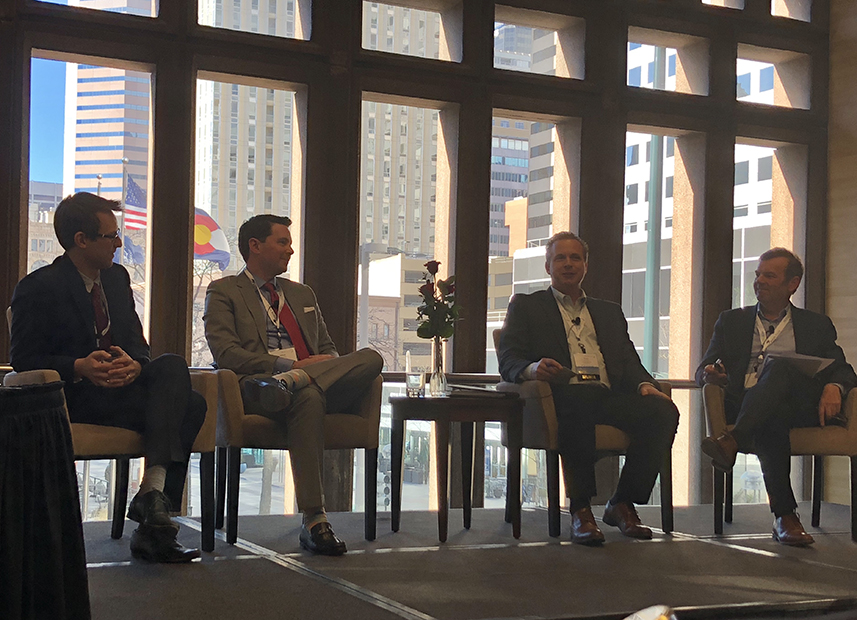PACE of Growth
One topic topped discussions during PACENation’s third annual summit: how to expand this valuable financing tool. Here are five key requirements.
By Justin Dean

PACENation New Construction panel: (left to right ) John Caleb Bell, Partner, Bricker & Eckler LLP; Ethan Elser, Vice President, PACE Equity; Chris Jones, Director of PACE Financing, Energize Kentucky; and Jonathan Pickering, Managing Director & Co-Founder, K2 Clean Energy Capital
PACENation’s third annual summit in Denver covered a wide array of topics during three days of speeches and panels, but one topic kept popping up: what must be done for PACE to continue to grow as a financing tool. These are the five most frequently mentioned requirement to expand PACE financing:
Education
The consensus among nearly all of the panelists at the PACENation Summit was that education and awareness is the biggest bottleneck for PACE financing. Many owners are already undertaking energy efficiency projects in their buildings but are unaware that PACE financing exists as an instrument available to them. The benefits of PACE include no upfront costs, reductions of energy consumption and favorable interaction with existing tax credits. The PACE industry must now figure out how to best communicate these benefits to property owners
Passing Commercial PACE Laws in More States
This is obvious, but passing Commercial PACE laws in more states will open many markets that are currently closed for the growing industry. To that end, some in the PACE industry touted the bipartisan support the program has received in statehouses across the country, as well as PACENation’s continued relationship with the American Legislative Exchange Council (ALEC). While ALEC Chairman and North Carolina House Rep. Jason Saine had to cancel a scheduled speech at the last minute, there was much optimism at the event that PACE programs could continue momentum with legislative bodies across the country.
Lowering Costs
While many property owners may enjoy the environmental impact that PACE projects can generate, at the end of the day the decision is a financial one. The commercial PACE industry, while growing quickly, is still in its infancy. Many of the panelists that spoke during the conference expressed belief that price compression could come from multiple areas. Technological advances will lead to lower costs for the projects being installed. Competition among PACE providers will lead to more efficient business practices as well as …
Standardization
The most frequently mentioned opportunity to reduce the costs of PACE financing involved standardization, consistency and uniformity across the PACE industry. Because every state with a PACE program has different statutes, perfect uniformity across the nation is not possible. However, many believed that with proactive leadership by PACENation there is much that can be done on this front. Working with legislators to ensure statutes don’t vary much from state to state will be important for the industry.
Bank Acceptance
Because PACE assessments place on the property a lien that is senior to other liens, including mortgages, lender consent is required by the statutes of most states with Commercial PACE programs. This can make lenders nervous about adding another, and what can sometimes be seen as a competitive, source of capital to a property. Another challenge is that many large banks have big organizational structures and require ample effort to spread education and acceptance throughout the institution. Additionally, banks are sometimes nervous about approving a financing tool that has a 20-year life, a much longer term than most CRE loans.







You must be logged in to post a comment.